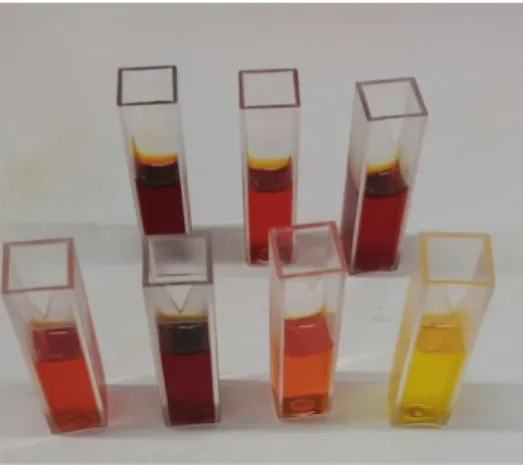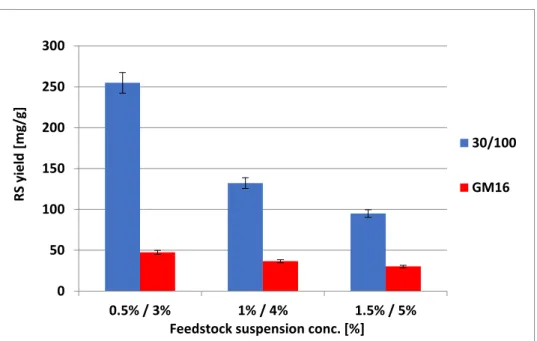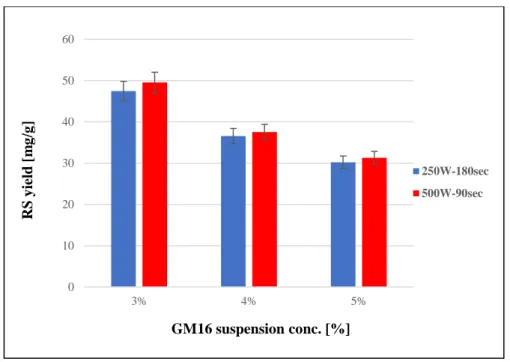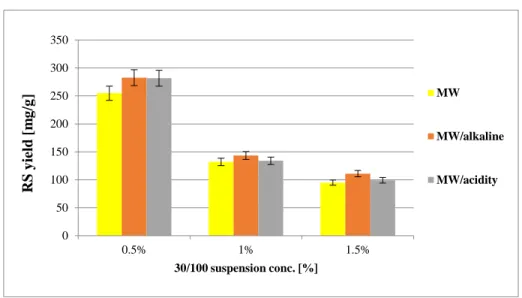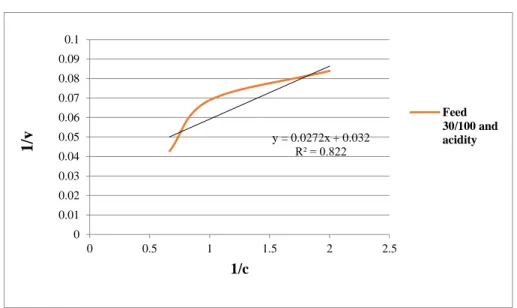INTENSIFICATION OF CELLULOSE ENZYMATIC HYDROLYSIS BY MICROWAVE PRETREATMENT
1*Mücahit Varlı, 2*Elif Gülin Ertuğral, 3Zoltán Jákói, 3,4Cecilia Hodúr, 3,4Sándor Beszédes
1Bolu Abant Izzet Baysal University, Faculty of Engineering, Department of Food Engineering, 14280, Bolu, Turkey,
2 Marmara University, Faculty of Engineering, Bioengineering Department, 34722, Istanbul, Turkey
3 Department of Process Engineering, Faculty of Engineering, University of Szeged, Moszkvai krt. 9, H-6725 Szeged, Hungary.
4 Institute of Environmental Science and Technology, University of Szeged, H-6720 Szeged, Tisza L. krt 132, Hungary
* The first two authors contributed equally to this work e- mail: mucahitvarli@hotmail.com
ABSTRACT
A significant representative of the third generation of raw materials is waste containing hemicellulose.
Agriculture and the food industry generate a great deal of this type of waste, which has many potential opportunities for processing. Our research group investigated the pre-treatments for the enzymatic saccharification of the cellulose content of the two fractions of corn cob meal. Microwave energy communication was performed in both acidic and alkaline media. It was found that the pH of the medium influences the amount of reducing sugars, but to an almost equal extent. The yield is also significantly dependent on the starting material and the concentration of the suspension.
Keywords: microwave pre-treatment, cellulose, enzymatic hydrolysis, enzymatic saccharification
1. INTRODUCTION
Corncob is a lignocellulosic material which is second generation feedstock to achieve energy. In this study, two main substrates were used which are made from corncob; Feeds (30/100) and Grits (GM).
Substrates are different from each other depending on their size. Feeds are the inner part of corncob that is softer and grits are woody part of corncob that has higher hardness. The corncob belongs to the second generation feedstocks because it is nonedible biomass. The second generation feedstocks have beneficial relationships with environment as well as the society; such as indirectly helping carbon dioxide fixation in the atmosphere, which is caused by greenhouse gasses, reducing air pollution, facilitating economic development and being renewable and sustainable. Lignocellulosic biomass is a very efficient choice to benefit from. Its ingredients are cellulose (35-40%), hemicellulose (20-35%), lignin (15-20%) and other minor components such as ash, protein, minerals etc. Despite cellulose and hemicellulose being the precursor of production processes, lignin is a recalcitrant part of lignocellulosic biomass. Due to the recalcitrance characteristic of lignin, it should be separated from beneficial parts of biomass and for this purpose pretreatment processes have been developed [1].
Primary pretreatment methods include biological pretreatment, physiochemical pretreatment (steam explosion), chemical pretreatment under alkaline/acidic conditions, neutral conditions (liquid hot water).
The purpose of this study is to evaluate the effect of microwave as a pre-treatment technique for cellulose hydrolysis [2]. Microwave enhanced pre-treatment is a hopeful processes on account of its high energy transfer and its application is easy and potential faster. Microwave irradiation can change the division between the main components of lignocellulosic material between the lignocellulosic ultrastructure of lignocellulosic material and cellulose and hemicellulose, and increase the enzymatic susceptibility to enzymatic hydrolysis and improve sugar recovery [3, 4].
During the pretreatment process, complex network of cellulose and hemicellulose with lignin should be broken down, and it makes the enzymatic hydrolysis much easier. There are several different types of
Figure 1: Deconstruction of lignocellulose by enzymes [7]
The effect of pretreatment may be expressed by the enzyme kinetics way. When reducing sugar concentration is achieved, enzyme kinetic can be calculated by Michaelis-Menten equation (Eq.1). An equation describes the affinity of a particular enzyme for a particular substate which is showed below;
V= 𝑉𝑚𝑎𝑥 [S]
𝐾𝑚±[S] (1)
V= Velocity , S=Substrate concentration, Km = The Michaelis-Menten constant [8]
Km show that the affinity of the enzyme for its substrate. If the Km value is high, the affinity of the enzyme for its substrate is low. Otherwise, if the Km value is low, the affinity of the enzyme for its substrate is high.
Generally, the Michaelis-Menten is ploted to evaluate the Km value (Fig.2) to show the velocity and substrate concentration. If the substrate concentration is increased, velocity increases up to a certain value.
Km is usually calculated half of the value of Vmax.
Figure 2: Diagram of reaction speed and Michaelis-Menten constant (Km) [9]
If the Vmax is not observed the experiment, Km is measured with the Lineweaver-Burke plot (Fig.3). Slope shows the Michaelis-Menten constant over Vmax. Lineweaver-Burke plot, as follows:
Figure 3: The Lineweaver-Burke plot of an enzyme catalysed reaction [10]
2. MATERIALS AND METHODS 2.1. Preparing Solution
Grinded corncob was used as feedstock which has two different types; Grit (GM16) and Feed 30/100.
Suspensions were prepared with distilled water according to desired concentration (0.5 – 5 w%) and they were mixed well by magnetic stirrer. Suspensions were soaked and incubated overnight at 37 °C.
2.2. Pretreatment
Chemical pre-treatment was done by using NaOH (40%) and H2SO4 (40%) as chemicals. Suspensions were pre-treated by professional laboratory microwave equipment with the desired microwave power (MWP, 250 and 500W) and irradiation time ( 90 and 180sec) and operated at 2450 MHz frequency.
2.3. Sampling
After pretreatment and before enzyme reaction, pH of suspensions were measured with pH meter and adjusted between 5.3 and 5.5 with using NaOH (40%) and H2SO4 (40%). Xylanase and Cellic CTec2 (Novazyme) enzymes was added into flask as desired dosage. 1 ml of xylanase , which is the part of hemicellulase, and 600 µl of Cellic CTec2 which is complex of cellulose and hemicellulase, were used as enzyme to degrade rigid construction of feedstock. 1 ml of suspension was transferred into eppendorf tubes from each flask one by one.
2.4. Measurement
3,5-Dinitrosalicylic (DNS) colorimetric method widely used for the determination of the presence of reducing sugar by the existing of aldehyde or ketone group after pre-treatment process. In the right alkaline conditions and heat, the method will occur, which is oxidation of specific sugar groups and reduction of 3,5-dinitrosalicylic acid into 3-amino, 5-nitrosalicylic acid and gluconic acid will be occurred end of the reaction. By spectrophotometer, amount of reducing sugar can be measured at specified wavelength (512 nm) range [11]. During four days, method was repeated as from sampling. Every day, amount of reducing sugar of each samples were measured. According to absorbance values, calibration curve was plotted and reducing sugar concentrations were calculated by calibration curve. Absorbance values were multiplied by slope of trend line of calibration curve and finally, reducing sugar yields (mg/g) were calculated.
Figure 4: Colorful reducing sugar samples
3. RESULTS AND DISCUSSION
The aim of our research was to help the enzymatic decomposition of cellulose-containing wastes by different pretreatments.
The pretreatments were chosen according to energy dissipation of microwave in acidic or alkaline media.
For enzymatic degradation, two types of enzymes, Cellic CTec2 and xylanase, were used. As the corncob fractions (Feed 30/100 and GM16) used as raw materials differed in their composition mainly due to their lingnine content, we present our results separately.
Figure 5 : Comparison of different feedstock fractions with Cellic CTec2 enzyme and microwave pretreatment with 250W during 180sec
In Figure 5, there are two different types of feedstock fractions which are 30/100 (blue) and GM16 (red).
30/100 samples were prepared with 0.5, 1 and 1.5% suspension concentration and GM16 samples were prepared with 3, 4 and 5% suspension concentrations due to previous result of the research team [12]. After microwave pretreatment with 250W during 180 seconds, Cellic CTec2 enzyme was used for degradation of lignocellulosic feedstock. According to Figure 5, 30/100 samples have higher RS yield than GM16 samples with microwave pretreatment. It was expected that because 30/100 type is more soft (with lower lignin content) and has smaller particle size. Because of the smaller particle, construction of 30/100 can be damage easily with pretreatment and enzyme can work more efficiently. However, suspension concentration is also important effect on pretreatment. Low concentration sample has the highest RS yield because there are less particle that should be hydrolyzed. Moreover, the irradiated energy delivered to suspensions was more effective if suspension concentration was lower.
3.1. GM16 Fraction
In Figure 6, there are two different MW pretreatment which are 250W-180sec (blue) and 500W-90sec (red) was applied on GM16 samples and Cellic CTec2 enzyme was used. Appliying 250W to samples during 180 sec is equal to appliying 500W to samples during 90 sec as the same irradiated energy (45000 J).
0 50 100 150 200 250 300
0.5% / 3% 1% / 4% 1.5% / 5%
RS yield [mg/g]
Feedstock suspension conc. [%]
30/100 GM16
Figure 6 : Comparison of different MW pretreatment on GM16 samples with Cellic CTec2 enzyme and without alkaline dosage As seen in Figure 6, higher power has manifested in slightly but not significantly increment of RS;
therefore, further measurements on GM16 samples were done at this power level (500W).
GM16 samples with different suspension concentration (3, 4 and 5%) were broke down with two different types of enzyme; xylanase(blue) and Cellic CTec2 (orange) (Fig.7).
Figure 7 : Comparison of different types of enzyme on GM16 samples with 500W-90s MW pretreatment without alkaline dosage Since the Cellic CTec2 is an enzyme cocktail, it was expected that Cellic CTec2 enzyme is more efficient on deconstruction of this lignocellulosic feedstock.
0 10 20 30 40 50 60
3% 4% 5%
RS yield [mg/g]
GM16 suspension conc. [%]
250W-180sec 500W-90sec
0 10 20 30 40 50 60
3% 4% 5%
RS yield [mg/g]
GM16 suspension conc. [%]
Xylanase Cellic
In Figure 8, there are three different pretreatment which are 500W-90s (yellow), 500W-90s/alkaline (0.2ml/g)(orange) and 500W-90s/acidity (0.1ml/g)(grey). GM16 samples were prepared with 3, 4 and 5%
suspension concentration and were exposed by microwave pretreatment 500W during 90 sec.
Figure 8 : Comparison of the efficiency of different pretreatments on GM16 samples with 500W-90s MW pretreatment and Cellic enzyme
It is seen that MW/alkaline pretreatment has a significant increment on RS yield of GM16 samples when it is compared with MW/acidity or only MW pretreatments.
3.2. Feed 30/100 Fraction
The Feed 30/100 fraction contains significantly less lignin, and therefore, according to our preliminary experiments (Fig.5), lower suspension concentrations (0.5, 1.0, 1.5%) and lower MW power level (250W–
180sec) but the same dissipated energy were used (45000 J).
Due to the lower lignin content, it is not surprising that, especially at lower suspension concentrations, the RS yield is significantly higher with the use of Cellic CTec2 enzyme (Fig.9).
0 10 20 30 40 50 60
3% 4% 5%
RS yield [mg/g]
GM16 suspension conc. [%]
MW
MW/alkaline
MW/acidity
Figure 9 : Comparison of the effects of different types of enzyme on Feed 30/100 samples with 250W-180s MW pretreatment
Xylanase enzyme has degradation effect on mainly the hemicelluloses. However, Cellic CTec2 is a mixture of enzymes that has degradation activity on both hemicellulose and cellulose. If pretreatment with microwave irradiation under alkaline condition can degrade the complex structure of feedstock more hemicellulose fraction has been become available for hydrolysis by xylanase enzyme.
In Figure 10, Feed 30/100 samples were prepared with 0.5, 1.0 and 1.5% suspension concentration were exposed by microwave pretreatment with 250W during 180 seconds. Alkaline (0,2 ml/g NaOH (40%)) and acid (0,1 ml/g H2SO4 (40%)) addition were cooperated with microwave during pretreatment. Yellow column indicates only microwave pretreatment, orange column indicates microwave and alkali pretreatment and grey column indicates microwave and acid pretreatment.
Comparison of the different pretreatments significant difference showed only at the lowest suspension concentration. Here, both MW/acidic and MW/alkaline pretreatments are preferred over only MW pretreatment (Fig. 10).
0 50 100 150 200 250 300
0.5% 1.0% 1.5%
RS yield [mg/g]
30/100 suspension conc. [%]
Xylanase Cellic
Figure 10 : Comparison of different pretreatments on Feed 30/100 samples with 250W-180s MW pretreatment and Cellic enzyme At higher suspension concentrations, the difference is only a tendency, not significant, and this tendency is more pronounced at alkaline pretreatment. So, according to Figure 10, samples combined MW&alkaline pretreatment produce higher RS yield than samples exposed only MW irradiation as solely pretreatment. It can be seen obviously that NaOH is an auxiliary effect on pretreatment. Alkalinity affects polarity of construction, so breaking down occurs easily. Additionally, decreasing of suspension concentration led to enhanced RS production.
3.3. Enzyme Kinetics
Based on Eq. 1 and Fig. 2 the most important kinetics parameters were calculated. Just for illustration see.
Fig. 11. The calculated data of maximum velocity (Vmax) and Michaelis-Menten coefficient (Km) are showed in Table 1 [8].
Table 1: Enzyme kinetics results
* Vmax = maximum velocity, Km = The Michaelis-Menten constant 0
50 100 150 200 250 300 350
0.5% 1% 1.5%
RS yield [mg/g]
30/100 suspension conc. [%]
MW
MW/alkaline
MW/acidity
Sample Vmax Km
Feed 30/100 250W-
180sec and acidity 31.25 0.85
GM16 500W-90sec alkaline Xyl
51.55 2.63
GM16 acidity Cellic 41.15 3.53
Figure 11 : Linewiever-Burk plots in the case of Feed 30/100 samples combined MW and acid pretreatment
It can be summarized that chemical pretreatment can increase the RS yield from the different feedstock fractions but beside the increment of RS yield the combined MW-chemical pre-treatments have also effect on degradation kinetic. As our results show with microwave irradiation and combined microwave acidic/alkaline pretreatments the degradation rate can be improved.
4. CONCLUSION
Consequently, different microwave powers have but it has different effects on samples. Different enzymes are efficient for different feedstock fractions types. Cellic enzyme is more efficient for feedstock fractions types and Feed 30/100 samples have higher RS yield than the GM16 because of their physichochemycal structure and components, i.e. less lignin.
When enzyme effect on different type of feedstock fractions fraction was compared the Feed 30/100 samples have higher RS yield at any condition.
It can be concluded that alkaline and acidic dosage has also effect on RS yield, but the extent of RS increment was determined by the MW power, suspension concentration and the type of feedstock fractions raw materials, as well. In general, the combinated MW & alkaline pre-treatments was more effective than MW&acidic pre-treatments, but it was found that for 0.5% Feed 30/100 feedstock fractions suspension the microwave irradiation with alkaline and acidic pre-treatment produce the same RS yield.
ACKNOWLEDGEMENT
The project was finances by EFOP-3.6.2-16-2017-00010-RING 2017 and NKFIH/OTKA K-115691 projects.
y = 0.0272x + 0.032 R² = 0.822
0 0.01 0.02 0.03 0.04 0.05 0.06 0.07 0.08 0.09 0.1
0 0.5 1 1.5 2 2.5
1/v
1/c
Feed 30/100 and acidity
REFERENCES
[1] V. Balan, “Current Challenges in Commercially Producing Biofuels from Lignocellulosic Biomass”, ISRN Biotechnology, 2014, 1-31, 2014.
[2] S. Ethaib, R. Omar, M. Mazlina, A. Radiah, S. Syafiie, and M. Y. Harun, “Effect of Microwave- assisted Acid or Alkali Pretreatment on Sugar Release from Dragon Fruit Foliage”, International Food Research Journal 23(Suppl): S149-S154, December 2016.
[3] J. Fan, M.D. Bruyn, Z. Zhu, V. Budarin, M. Gronnow, L.D. Gomez, J. Clark, “Microwave-enhanced Formation of Glucose from Cellulosic Waste”, Chemical Engineering and Processing: Process Intensification, 71, 37-42. doi:10.1016/j.cep.2013.01.004, 2013
[4] J. Xu, H. Chen, Z. Kádár, A.B. Thomsen, J.E.Schmidt, H. Peng , “Optimization of Microwave Pretreatment on Wheat Straw for Ethanol Production”, Biomass and Bioenergy, 35(9), 3859-3864.
doi:10.1016/j.biombioe.2011.04.054, 2011.
[5] Somerville, C., Bauer, S., Brininstool, G., Facette, M., Hamann, T., Milne, J., Vorwerk, S. Toward a systems approach to understanding plant cell walls. Science, 306(5705), 2206-2211, 2004.
[6] Z. Zhang, A. A. Donaldson, and X. Ma, “Advancements and Future Directions in Enzyme Technology for Biomass Conversion,” Biotechnology Advances, vol. 30, no. 4, pp. 913–919, 2012.
[7] V. K. Gupta, C. P. Kubicek, J. Berrin, D. W. Wilson, M. Couturier, A.,Berlin, T. Ezeji, “Fungal Enzymes for Bio-Products from Sustainable and Waste Biomass,” Trends in Biochemical Sciences, 41(7), 633-645. doi:10.1016/j.tibs.2016.04.006, 2016
[8] A. Nath, “Michaelis-Menten Kinetics and Briggs-Haldane Kinetics”, Departments of Medicinal Chemistry and Pharmaceutics, University of Washington, December 2007, from http://depts.washington.edu/wmatkins/kinetics/michaelis-menten.html
[9] N. Sturm, “Enzymes: Catalysis and Kinetics”, College of Medicine, University of Arizona, 2014, from http://www.nbs.csudh.edu/chemistry/faculty/nsturm/BSN335/09_Enz.-Catalysis,%20Kinetics.html [10] K. Ahern, “Enzymes - Basic Concepts and Kinetics”, Oregon State University, 2012, from
http://oregonstate.edu/instruct/bb450/450material/lecture/enzymesoutline.html
[11] K. S. Başkan, E. Tütem, E. Akyüz, S. Özen, R. Apak, “Spectrophotometric Total Reducing Sugars Assay Based on Cupric Reduction”, Talanta, 147, 162-168. doi:10.1016/j.talanta.2015.09.049, 2016.
[12] B. Lemmer; Z, Jákói ; S, Beszédes ; G, Keszthelyi-Szabó ; C, Hodúr (2017) Microwave enhanced enzymatic hydrolysis of corncob residues In: Magó, László; Kurják, Zoltán; Szabó, István (szerk.)
“SYNERGY - Engineering, Agriculture and Green Industry Innovation” : ABSTRACTS of the V.
International Conference of CIGR Hungarian National Committee and the Szent István University, Faculty of Mechanical Engineering and the XXXVIII. R&D Conference of Hungarian Academy of Sciences, Committee of Agricultural and Biosystems Engineering, Gödöllő, Hungary, 16 – 19.
October 2017.
![Figure 1: Deconstruction of lignocellulose by enzymes [7]](https://thumb-eu.123doks.com/thumbv2/9dokorg/972004.58147/2.774.150.618.158.588/figure-deconstruction-lignocellulose-enzymes.webp)
![Figure 3: The Lineweaver-Burke plot of an enzyme catalysed reaction [10]](https://thumb-eu.123doks.com/thumbv2/9dokorg/972004.58147/3.774.256.514.466.667/figure-lineweaver-burke-plot-enzyme-catalysed-reaction.webp)
